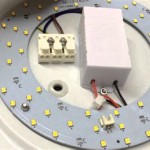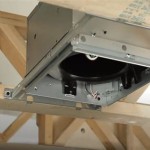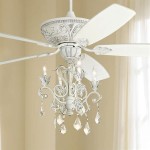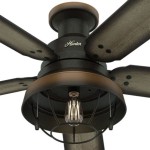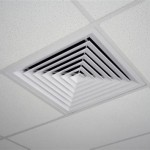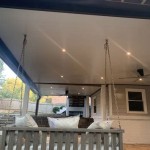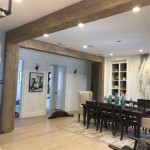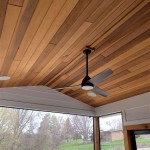What Brand of Ceiling Fan is the Quietest to Buy?
Selecting a ceiling fan often involves prioritizing several factors, including energy efficiency, aesthetics, and airflow. However, for many consumers, a key consideration is the operating volume of the fan. A noisy ceiling fan can be a significant distraction, particularly in bedrooms, home offices, or living areas where quiet is desired. While designating a single brand as definitively "the quietest" is challenging due to variations in models, motor types, and installation quality, certain brands consistently receive praise for their quiet operation and offer design features that contribute to reduced noise levels. This article will explore the factors that influence ceiling fan noise, discuss brands known for quiet performance, and offer guidance on selecting a quiet ceiling fan.
The perception of noise is subjective, but typically, a quiet ceiling fan operates below 30 decibels (dB). This level of background noise is often comparable to a whisper. Factors contributing to ceiling fan noise include the motor type and construction, blade design, balancing, and installation.
Understanding the Sources of Ceiling Fan Noise
Several components and characteristics of a ceiling fan contribute to the overall noise level it produces. Understanding these sources allows consumers to make informed decisions when purchasing a fan intended for quiet operation.
Motor Type: The motor is the primary source of noise in a ceiling fan. There are primarily two types of motors used in ceiling fans: AC (Alternating Current) and DC (Direct Current). AC motors are generally older technology and tend to be noisier than their DC counterparts. They often produce a humming or buzzing sound, especially at higher speeds. DC motors are more efficient and operate considerably quieter due to their design and the use of electronic controls. They also offer more speed settings, allowing for finer adjustments to airflow and noise levels.
Blade Design and Material: The shape, size, and material of the blades impact the airflow and, consequently, the noise generated. Blades that are not properly balanced or are made from lightweight materials can vibrate, leading to increased noise. Aerodynamic blade designs, optimized for efficient airflow, tend to be quieter. Solid wood or composite blades are often preferred for their stability and ability to minimize vibrations.
Balancing and Installation: Even a high-quality fan can be noisy if it is not properly balanced or installed. Imbalanced blades cause wobbling, which generates noise and can potentially damage the fan motor over time. Correct installation, including ensuring that the fan is securely mounted to a stable electrical box, is essential for preventing vibrations and reducing noise. Using a balancing kit to fine-tune the blade alignment can further minimize noise after installation.
Bearing Quality: The bearings within the motor play a critical role in the smooth and quiet operation of the fan. Low-quality bearings can produce grinding or squealing noises, especially as the fan ages. Opting for a fan with high-quality, sealed bearings can significantly extend the lifespan of the fan and maintain its quiet performance.
Fan Speed: It's a simple point, but a faster spinning fan is often louder than a slow-spinning fan. Most modern fans come with variable speed settings. Using slower, quieter speeds allows enough circulation for comfort without generating excessive noise. This is particularly important in bedrooms where even minimal motor humming can disrupt a sleeper.
Brands Known for Quiet Ceiling Fan Operation
While pinpointing a single "quietest" brand is difficult, several manufacturers are consistently recognized for producing ceiling fans with a focus on quiet operation. These brands often incorporate advanced motor technology, aerodynamic blade designs, and rigorous quality control to minimize noise levels.
Hunter Fan Company: Hunter is a well-established brand in the ceiling fan market, known for its reliability and innovation. Hunter fans often feature their proprietary WhisperWind motor technology, which is specifically designed to provide powerful airflow with minimal noise. Many Hunter fans also incorporate balanced blade designs and high-quality bearings to further reduce noise levels. They offer a wide range of styles and sizes, making it easier to find a quiet fan that complements a variety of room decors.
Minka-Aire: Minka-Aire is another reputable brand recognized for its focus on design and performance. They offer a diverse selection of ceiling fans, many of which incorporate energy-efficient DC motors that operate quietly. Minka-Aire fans often feature sleek and modern designs, making them a popular choice for contemporary homes. They are also known for their attention to detail and quality construction, which contributes to their quiet operation.
Craftmade: Craftmade offers a range of ceiling fans that blend style and functionality. While not exclusively focused on quiet operation, many of their models are designed with noise reduction in mind. Craftmade fans often feature well-balanced blades and robust motor construction, which helps to minimize noise. They offer a variety of traditional and modern designs, catering to a broad range of aesthetic preferences.
Monte Carlo Fans: This brand is a division of Generation Lighting and concentrates on delivering designer-style fans. They are known for their use of DC motors, allowing their fans to operate more quietly and efficiently than models with AC motors. Monte Carlo fans undergo rigorous testing to ensure they meet certain standards of quality and minimal noise generation. Many fans in their lineup incorporate integrated LED lights and smart home compatibility.
It's crucial to read reviews and compare specifications before purchasing any ceiling fan, as individual experiences and product performance can vary. Look for models that specifically advertise quiet operation or feature DC motors.
Key Features to Look for in a Quiet Ceiling Fan
Beyond brand reputation, several specific features can indicate a ceiling fan's potential for quiet operation. By focusing on these features, consumers can increase their chances of selecting a fan that meets their noise level expectations.
DC Motor: As previously mentioned, DC motors are significantly quieter and more energy-efficient than AC motors. When searching for a quiet ceiling fan, prioritizing models with DC motors is a crucial step. DC motors also offer the benefit of more speed settings, providing greater control over airflow and noise levels. This enables the user to fine-tune the fan's performance to find the ideal balance between comfort and quietness.
Blade Balancing: Imbalanced blades are a common source of noise in ceiling fans. Look for fans that come with a blade balancing kit or have features designed to minimize blade wobble. Balancing kits typically include small weights that can be attached to the blades to correct any imbalances. Fans with aerodynamically optimized blades designed to reduce air turbulence also tend to be quieter.
Quality Bearings: The bearings in the motor play a critical role in ensuring smooth and quiet operation. Opt for fans with sealed ball bearings, as these are typically more durable and quieter than other types of bearings. Sealed bearings are also less prone to dust and debris contamination, which can further extend their lifespan and maintain their quiet performance.
Solid Construction: The overall build quality of the fan contributes to its noise levels. A well-constructed fan with a robust motor housing and securely attached blades is less likely to vibrate and generate noise. Look for fans made from high-quality materials, such as solid wood or composite blades, and ensure that all components are properly assembled.
Noise Level Specifications: Some manufacturers provide noise level specifications for their ceiling fans, typically measured in decibels (dB). While these specifications can be helpful, it's important to note that they may not always accurately reflect real-world performance. Factors such as room acoustics and installation quality can influence the perceived noise level. However, comparing noise level specifications can provide a general indication of the fan's potential for quiet operation.
Smart Features: Several new fans feature dimming lights, smart-home functionality and voice assistant compatibility. While these features do not always directly impact noise performance, choosing smart fans can allow users to schedule operation for times when they're not in the space, or to adjust speed silently via voice control. Some brands may even allow programming for quiet operation at specific times of day, useful in bedrooms for sleep.
Choosing the right ceiling fan by paying attention to these features and exploring the brands mentioned can significantly improve the sound conditions in a room. This leads to greater comfort and enjoyment of the space.

Quiet Ceiling Fans Hunter Fan

Tycolit 46 In Led Indoor White Ultra Quiet Smart Ceiling Fan With Light Remote Control 3 Color And 6 Sd Dc Motor Yb W113639944 The Home Depot

Ultra Quiet 52 Solid Wood Ceiling Fan With Remote Control Reversible Blades 6 Sd Matte Black Com

Dwvo 52in Ceiling Fan With Light And Remote Quiet Motor 3 Colors Changing 6 Sd Blades Reversible Airflow Black Walnut Com

Breeze Silent Dc Outdoor Ceiling Fan With Cct Led Light Black 52

Oaning 52 In Integrated Led Indoor Modern Silver Quiet Energy Saving 5 Reversible Blades Ceiling Fan With Remote Hcx189 Us The Home Depot

Quiet Ceiling Fans Hunter Fan

Indoor Ceiling Fan 44 Inch Quiet 5 Blades Reverse Airflow W Light Kit Modern

10 Best Ceiling Fan Brands In 2024 Top Picks

Hunter Mill Valley 52 Quiet Indoor Outdoor Ceiling Fan W Led Light Kit Black 1 Piece Fry S Food
Related Posts

